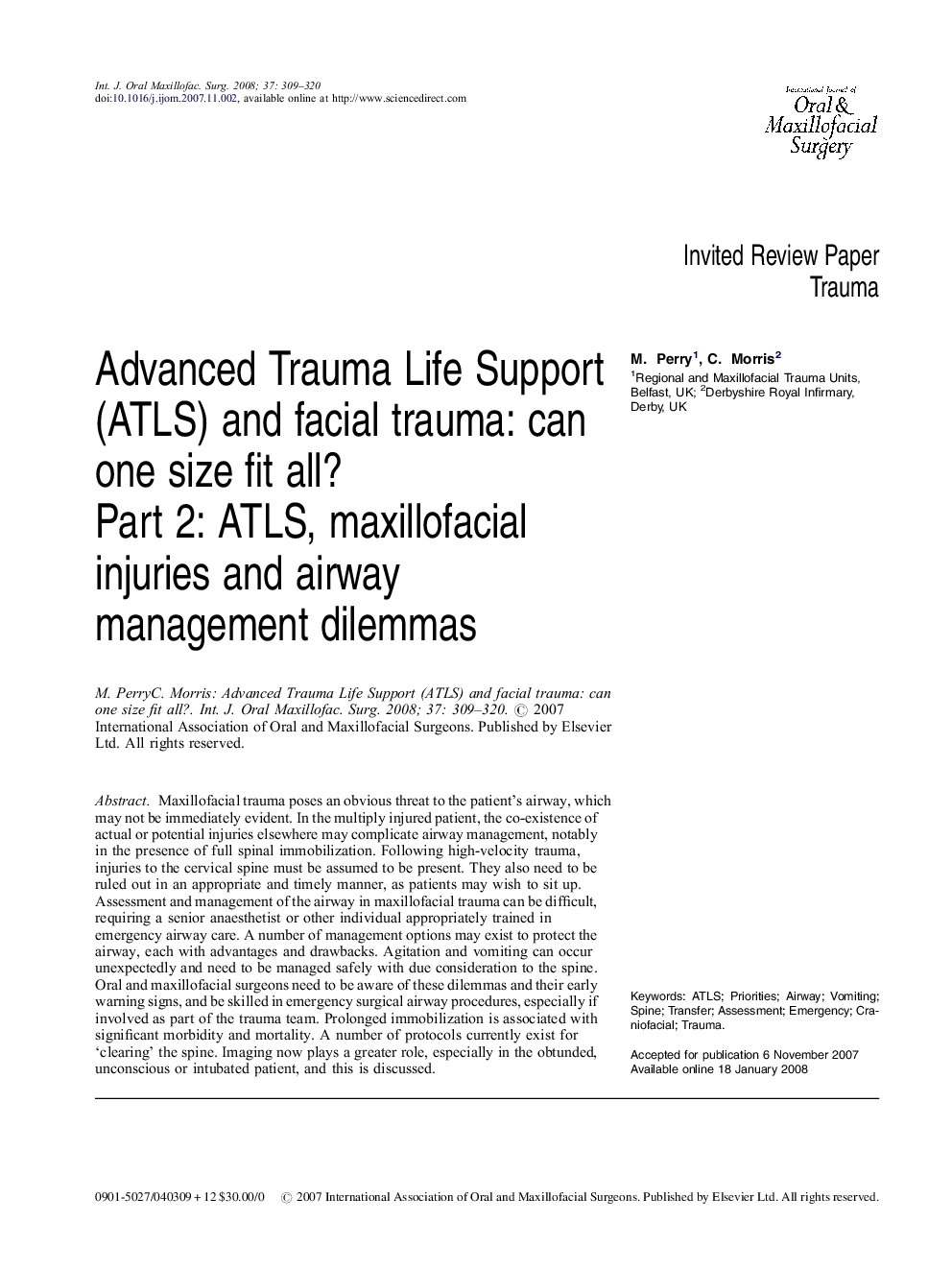| Article ID | Journal | Published Year | Pages | File Type |
|---|---|---|---|---|
| 3134690 | International Journal of Oral and Maxillofacial Surgery | 2008 | 12 Pages |
Maxillofacial trauma poses an obvious threat to the patient's airway, which may not be immediately evident. In the multiply injured patient, the co-existence of actual or potential injuries elsewhere may complicate airway management, notably in the presence of full spinal immobilization. Following high-velocity trauma, injuries to the cervical spine must be assumed to be present. They also need to be ruled out in an appropriate and timely manner, as patients may wish to sit up. Assessment and management of the airway in maxillofacial trauma can be difficult, requiring a senior anaesthetist or other individual appropriately trained in emergency airway care. A number of management options may exist to protect the airway, each with advantages and drawbacks. Agitation and vomiting can occur unexpectedly and need to be managed safely with due consideration to the spine. Oral and maxillofacial surgeons need to be aware of these dilemmas and their early warning signs, and be skilled in emergency surgical airway procedures, especially if involved as part of the trauma team. Prolonged immobilization is associated with significant morbidity and mortality. A number of protocols currently exist for ‘clearing’ the spine. Imaging now plays a greater role, especially in the obtunded, unconscious or intubated patient, and this is discussed.
